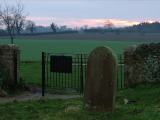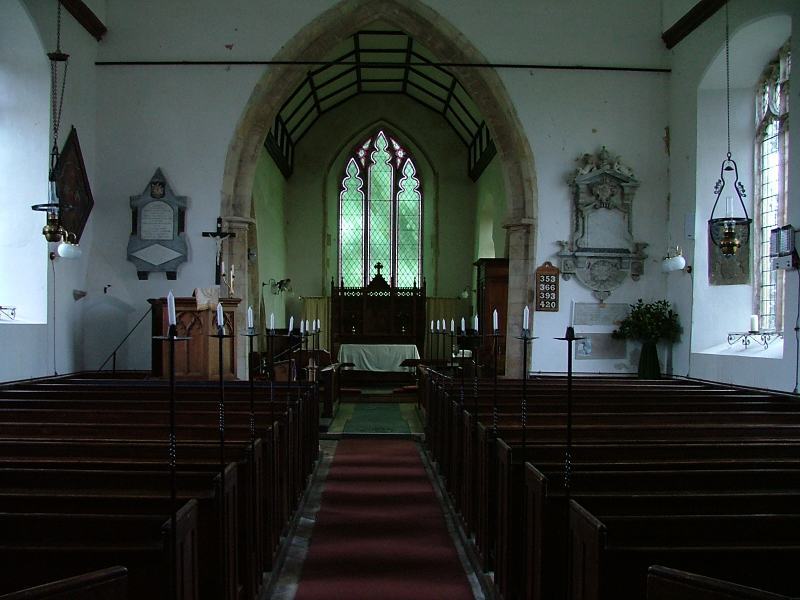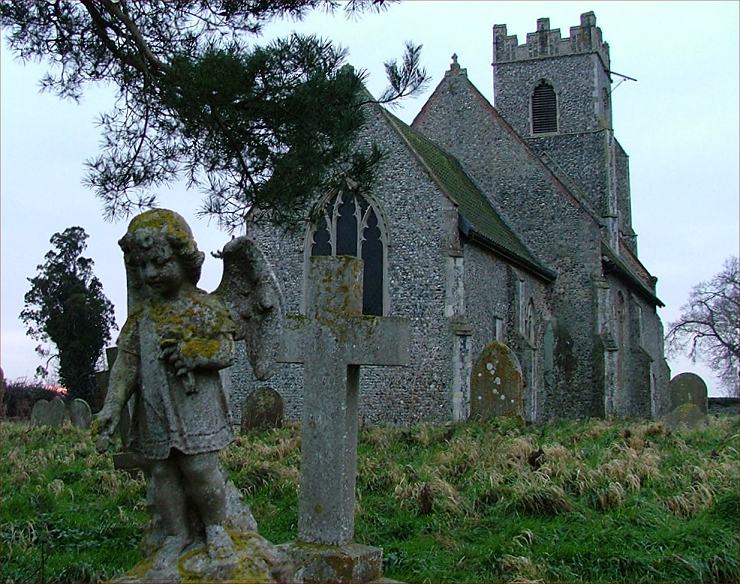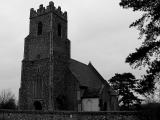| |
|
St
Michael, Broome The red sky behind you,
the feeling you've been here before...
 |
|
Norfolk,
in the middle of winter. Broome church sits
remote from its rather suburban village, on a
long ridge running through the fields overlooking
the Waveney Valley. Until the 19th century the
Hall stood beside it, and when Cautley came this
way in the 1930s the stable block was still
there, converted into cottages, but this has now
gone. Gone too are the hedgerows, and on a
late afternoon in early January it was a bleak
setting. The sun was going down beyond the hills
to the west, and it was easy to believe that the
20th century hadn't happened yet, let alone the
21st.
|
At places
like Broome, I am always struck that our parish churches
are, despite their medieval origins, essentially 19th
century artifacts, and tell us more about our Victorian
ancestors than they do about those from the 14th and 15th
centuries. The Victorian shadow is cast long over Broome,
and it is hard to think that, if our 19th century
forbears could return today, that they would find
anything outside of their understanding.
| The
font, for example; 19th century on a medieval
shaft; but more than that, the idea of a
font and where it is and its place in the liturgy
- these are all 19th century recreations, at
least for Anglicans. They reset the brass inlay
in a window splay, perhaps recognising how rare
the enamelling once so common to medieval brasses
was. Theirs too the garish green glass in the
east window - how depressing! Before the
Victorians, the hand-pumped Regency organ in its
imitation bookcase came here, and John Fowles
received his 18th century memorial.
|
|
 |
There's a
wonderful collection of bones and skulls about a timer on
a ledger stone in the chancel, but the biggest mystery is
the series of filled-in arches in the chancel walls. One
was the entrance to the roodloft, but the others must
have been into chancel aisles or chapels - all gone now.
There are
two medieval roundels in the south nave wall, and on this
murky day it took DD's technology to decipher them - two
angels, one holding a shield of chalices, the other a
shield of instruments of the passion.
 
There is
one thing that I found puzzling. As DD finished off
inside, I wandered around the graveyard in the half
light. One the northern edge, there was a sharp drop into
a wide passage below. It appeared to be a railway
cutting; in the 1960s, Norfolk had hundreds of miles of
line stripped away like varicose veins. The Victorians
would shake their heads in wonder, in incomprehension:
what on earth could be better than railways for
transporting goods and people? And yet, as DD pointed
out, the OS maps of this area show that Broome station
was a mile or so to the south, on the Beccles to Bungay
line. No line ran here, at least not in the 20th century.
So what did I see?
Arthur Mee
was very impressed by the war memorial, which once stood
proud in the graveyard but now leans up against the
tower. It seemed to fit in with the mood of the place; a
twilight in more than one sense, not sad exactly, but
something surviving, only just.
Simon Knott, January 2005
|
|
|


